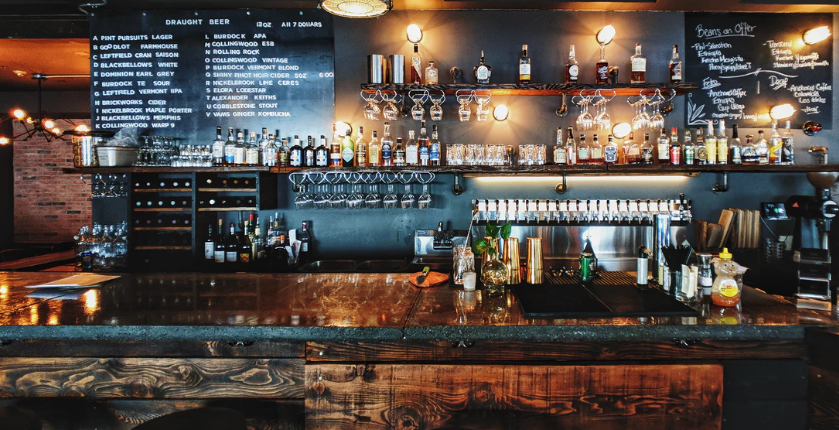How to Sue a Bar for Negligence

Bars are responsible for preventing their customers from encountering harm or injury. Some of the most common examples of harm include slips and falls, injuries from fights, and alcohol poisoning from over-serving.
In this article, you will discover how to sue a bar for negligence.
How to Sue a Bar for Negligence
Bars (also legally referred to as “dram shops”) have a responsibility to fulfill a reasonable duty of care – essentially, they must act reasonably to prevent you, or anyone else, from encountering harm. If this doesn’t happen, and you are injured, you may have the right to seek compensation in the civil court. We’ll explain how to sue a bar for negligence, and when you might want to do so, in this guide.
Who Is Responsible?
There is a common misconception that just because patrons who spend time in a bar might be inebriated, the bar providing the alcohol is automatically absolved of any responsibility. After all, the person chose to drink, and being inebriated greatly raises the risk of accidents. The problem is that this mindset is more of a blanket statement than true.
The real story is very different. If the bar engages in some kind of negligence that results in harm to a patron, they can be held responsible in the civil court. This is true even if the person injured is impaired.
Assigning fault essentially comes down to whether or not the bar fulfilled their duty of care. For example, a patron who injures themselves by tripping on their own two feet while drunk probably cannot sue the establishment. They are directly responsible for their own injuries; the bar didn’t influence this injury in any way.
On the other hand, if a patron who is inebriated trips because they catch their toe on a piece of uneven flooring in disrepair, the assignment of fault would be much different. In fact, the bar would probably be considered negligent because they failed in their duty to keep the premises in a safe and habitable condition.
Wet floors are another great example. If a bar cleans up a spill that leaves a floor slippery, they must put out indicators or prevent access until the floor is dry. If they don’t, and someone falls, they may be held liable for the resulting injuries.
Why Fault Isn’t Always Obvious
Frustratingly, fault isn’t always obvious in personal injury lawsuits against drinking establishments. Unless there is a clear influence, the line of responsibility can feel extremely murky and grey. Furthermore, bars can – and will – often try to defend themselves by claiming the patron either came in drunk or was already injured.
Fault can also be murky in situations where an employee is responsible for the harm, but the bar itself wasn’t aware of the failure. For example, if an employee continues to serve someone who should obviously be cut off, resulting in alcohol poisoning, the bar might argue that the patron chose to keep drinking. But, the patron would have the right to argue that the bar had a legal duty of care to deny him when it was clear he had already had too much to drink.
The fact that so much grey area exists within these lawsuits is exactly why it is so important to work with a lawyer. Even if you sue for a small amount through the civil court, where legal representation is disallowed, an attorney can still help you prepare.
Common Bar Injuries
Certain types of negligence and the forms of injury that stem from them are more common in drinking establishments than others. Some of these are common within the hospitality industry as a whole, while others are specific only to bars. However, all point to a direct issue with the bar’s failure to meet their duty of care.
Slips and Falls
Slips and falls are some of the most common negligent injuries in bars, clubs, and restaurants. The drinking environment encourages spills (liquid, food, or otherwise) which can quickly make floors slippery and difficult to navigate, especially when someone is drunk. Ice, snow, and slush in entryways, on patios, or on walkways can also be considered a negligent risk.
Assaults and fights
Assaults and fights are also very common in drinking establishments – especially those that solely focus on drinking without providing food. An unruly patron who has had too much to drink might threaten, assault, or even seriously harm another person by starting a fight or even a larger-scale riot. A bar can, in some cases, be held responsible for this, especially if there is evidence the person was a problem but the bar refused to ask them to leave.
Lacerations
Lacerations and other surface wounds, some of which may require stitches, are also surprisingly common in bars. Dropped glasses may cut feet, especially in the summer when people are wearing sandals. Uneven floors with nails that breach the surface can also cause cuts, as can bottles, glass decorations, and even picture windows if someone falls through.
Poisoning
Poisoning may occur if a bar serves bad food or somehow improperly handles the products they serve to customers. For example, a bar who accidentally adds blue glass cleaner to a patron’s drink, rather than blue curacao, because they are both stored in similar jars. This would be considered an extreme form of negligence.
Alcohol poisoning
Alcohol poisoning is by far one of the most common injuries that occur within bars. The establishment has a legal responsibility to ensure the safety of patrons by refusing to serve them if they are too drunk. A bar who ignores this can be held responsible for any resulting injuries or deaths (including, sometimes, third party injuries).
Lastly, nearly any personal injury to a minor who is served alcohol is considered negligence on the part of the bar. This is true whether negligence is clear or the minor harms themselves as a result of their inebriation.
It is illegal to serve minors alcohol in California. The moment the bar hands over that first drink, they have already failed.
Filing a Claim Against a Bar for Negligence
If you believe you have a case against a dram shop in the state of California, your first step should be to reach out to an attorney. He or she can help you walk through the evidence to identify the best way to proceed.
In most cases, suing a bar for negligence is much the same as suing any other business in a personal injury case.
How to Sue a Bar for Negligence
- Gather your evidence
Try to gather as much information as you can that proves the bar’s negligence and/or your injury. This may include witness testimony, videotapes, pictures, medical records, or telephone calls.
- Identify fault
Review the evidence and decide which items prove negligence or failure to adhere to duty of care. Be aware that, in the state of California, fault in personal injury cases can be individual (e.g., fully assigned to the bar) or shared (partially assigned to the bar and the patron). This can be confusing, which is exactly why working with an attorney is so important.
- Determine ownership
Is the bar a sole proprietorship, a partnership, a corporation, or a limited partnership? This will influence how you sue and who exactly you sue. A corporation, for example, is considered an entity; you must sue it directly. If a sole proprietorship, you would sue the owner instead.
- Find a lawyer
Contact your local attorney referral service to find the right lawyer for your case.
- File your lawsuit
Visit your County Clerk’s office and let the representative you speak to know you wish to file a lawsuit. You will be provided with several documents, including a guide on all of the necessary steps you must take. Fill the documents out carefully, paying close attention to specifics. Then, return them to the clerk – they will assign you a court date.
- Serve the other party with notice
Follow the “service of process” guidelines listed here to notify the bar of your intent to sue. Note that in most cases, it is best to hire an agent, such as a sheriff or off-duty police officer, to act as your agent, rather than serving the defendant yourself.
- Give the bar time to respond
The bar has a short period of time in which to respond to your lawsuit. They may agree to fault and offer to settle, or they may deny fault and push the matter to court. Avoid accusations, arguments, or any direct content not in the presence of a lawyer at this time.
- Have your day in court
If the bar chooses not to settle, and the matter goes to court, each of you will be granted time to explain your side to the judge. Then, he or she will make a final decision on how to rule. This is binding.
Conclusion
Complicating factors like alcohol and intoxication can make it difficult to know how to sue a bar for negligence effectively, but such actions are still possible. If you believe you have a case that falls under this jurisdiction, contact a personal injury lawyer right away.
Cases succeed more often with early intervention.
Are you in search for a certified attorney to represent you?
Let us help you find one today!


